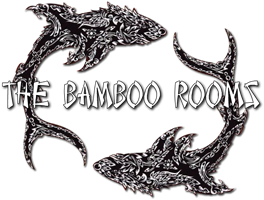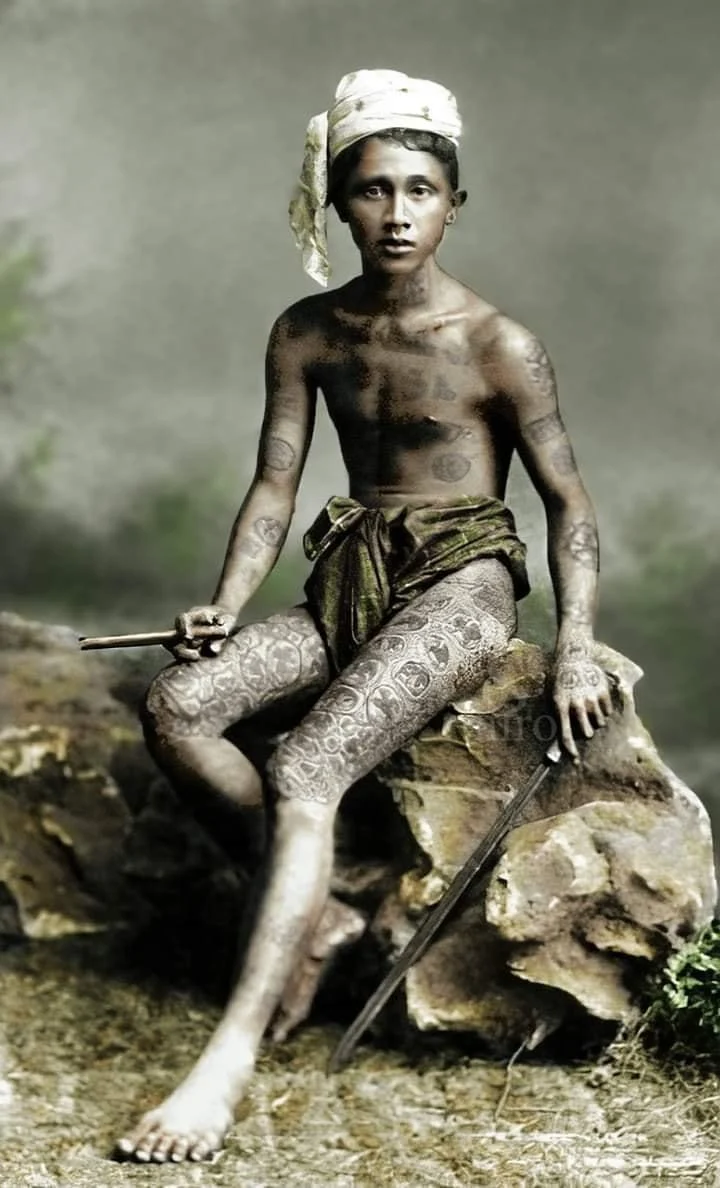Bamboo Tattoos In The 18th Century: A Historical Perspective Of The Lanna Leg Tattoos
Bamboo tattoos have been historically tattooed in the Chiang Mai region of Northern Thailand for centuries. One particularly fascinating time period with regards to bamboo tattoos and the traditional bamboo tattoo method takes us back as far as the 13th century and the Lanna kingdom.
The Lanna Kingdom flourished from the 13th to the 18th century, occupying what is now Northern Thailand, parts of Laos, and Myanmar. In fact, interestingly, Chiang Mai in Northern Thailand was once the capital of the Lanna empire!
The Lanna Kingdom was a culturally rich and diverse kingdom which had a unique tradition that set it apart from its neighbors: the art of leg tattoos, predominantly worn by men. These bamboo tattoos held deep significance and were not merely decorative; they were an integral part of the Lanna culture, reflecting one’s status, beliefs, and heritage.
During the 18th century the Lanna kingdom was gradually losing its independence to the expanding Burmese empire, which sought to exert control over the region. This political turmoil, in addition to the ever-present threat of war, had a significant impact on the culture and traditions of the Lanna people as they sought to hold onto their own identity and traditions. With the threat of annexation by Burma, the art of leg tattooing took on added significance to the Lanna people as a way of preserving their cultural identity. The practice of leg tattooing became a statement of defiance against foreign rule. It was a way for the Lanna people to assert their unique identity and maintain a connection to their cultural roots. The tattoos became symbols of resistance, a visible reminder of the Lanna people’s rich heritage that the Burmese empire sought to erase.
Therefore, Lanna leg tattoos were not merely decorative; they were powerful symbols of identity, strength, and spirituality. These tattoos often depicted mythical creatures, sacred symbols, and representations of local flora and fauna. The choice of design was deeply personal and carried significant meaning for the wearer.
One common motif in Lanna leg tattoos was the “Yantra,” a mystical symbol that was believed to protect the wearer from harm. Yantras were not only symbols of protection but were also seen as sources of power and strength. Men would adorn their legs with these intricate designs to instill a sense of invincibility, especially in the face of impending conflict.
Another popular motif was the “Naga,” a mythical serpent associated with water and fertility. The Naga was believed to bring prosperity and good fortune to the wearer. Men, especially those engaged in agriculture, wore Naga tattoos on their legs to seek blessings for bountiful harvests.
In the hierarchical society of the Lanna Kingdom, leg tattoos also held a significant role in signaling one’s social status. The more elaborate and extensive the tattoos, the higher the status of the individual. It was a mark of honor and distinction to have a well-decorated set of leg tattoos.
For men, acquiring these tattoos was a rite of passage. Young boys would often receive their first tattoos during adolescence, and they would continue to add to their designs as they matured. The process of receiving a leg tattoo was not merely a physical transformation but a spiritual journey. The bamboo tattoos were often administered by skilled monks using the bamboo tattoo method, who chanted sacred incantations during the process, infusing the tattoos with spiritual significance.
The unique and traditional method of creating Lanna leg tattoos involved the use of bamboo sticks rather than modern tattoo machines. This method, known then as “Sak Mudt”, is nowadays commonly referred to as bamboo tattoo or stick and poke tattoos. It is a process that requires exceptional skill and precision.
Monks and master tattoo artists would use a sharpened bamboo stick to manually puncture the skin, depositing ink into the intricate design. (Nowadays sterile metal needles are attached to the end of the bamboo stick). The chanting of mantras and prayers during the tattooing ritual was believed to imbue the tattoos with protective powers and blessings.
Over time, following the decline of the Lanna Kingdom, as it was gradually absorbed into the Burmese empire, there came a waning of the leg tattoo tradition. It looked set to permanently disappear to the pages of the history books until a recent resurgence of interest in Lanna history, culture and the ornately crafted leg tattoos rekindled in the heart of modern day Thailand and historians around the world. People are once again turning to this ancient bamboo tattoo technique and art form as a means of reconnecting with their cultural heritage and preserving the legacy of the Lanna Kingdom. Skilled tattoo artists such as those working at The Bamboo Rooms are reviving the old bamboo tattoo techniques and designs, creating beautiful and meaningful leg tattoos that pay homage to this rich tradition. While the kingdom itself may have faded into history, the legacy of Lanna leg tattoos lives on, as a testament to the resilience and enduring cultural significance of this unique art form, both distinct from and entwined with the modern culture of Chiang Mai.





